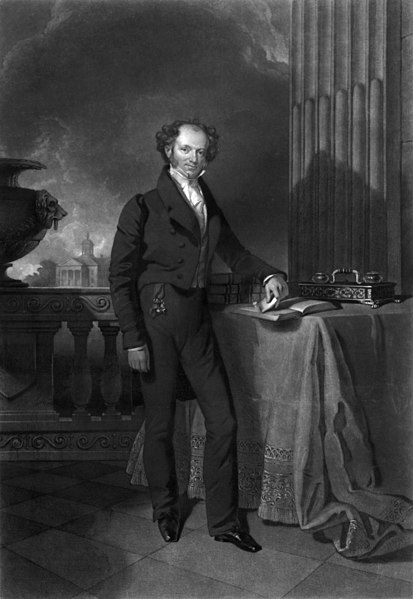The nullification crisis was a sectional political crisis in the United States in 1832 and 1833, during the presidency of Andrew Jackson, which involved a confrontation between the state of South Carolina and the federal government. It ensued after South Carolina declared the federal Tariffs of 1828 and 1832 unconstitutional and therefore null and void within the sovereign boundaries of the state. However, courts at the state and federal level, including the U.S. Supreme Court, repeatedly have rejected the theory of nullification by states.
Portrait of Thomas Jefferson by Rembrandt Peale, 1800
James Madison
Portrait of Martin Van Buren
John C. Calhoun
Presidency of Andrew Jackson
The presidency of Andrew Jackson began on March 4, 1829, when Andrew Jackson was inaugurated as President of the United States, and ended on March 4, 1837. Jackson, the seventh United States president, took office after defeating incumbent President John Quincy Adams in the bitterly contested 1828 presidential election. During the 1828 presidential campaign, Jackson founded the political force that coalesced into the Democratic Party during Jackson's presidency. Jackson won re-election in 1832, defeating National Republican candidate Henry Clay by a wide margin. He was succeeded by his hand-picked successor, Vice President Martin Van Buren, after Van Buren won the 1836 presidential election.
Presidency of Andrew Jackson
Secretary of War John H. Eaton
Jackson painted by Earl, 1830
John C. Calhoun of South Carolina








